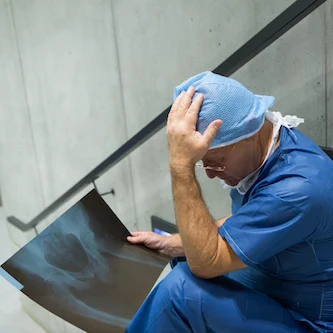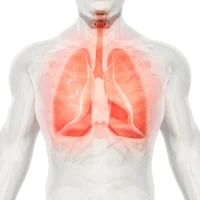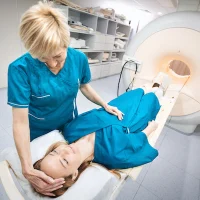A significant number of academic radiology department chairs in the United States suffer from burnout according to the first study investigating burnout among these medical professionals, published in Academic Radiology. Researchers found that burnout in radiology chairs needs to be dealt with immediately through national, institutional and departmental level efforts.
Work related burnout is quickly becoming the new epidemic in healthcare and radiology especially. Burnout is characterised by three key elements:
1. Emotional exhaustion
2. Depersonalisation (feelings of cynicism and treating patients as objects rather than human beings)
3. Sense of low accomplishment and inefficiency
It has been documented that more than half of the physicians in the United States are/or may be experiencing burnout and physician burnout is significantly higher that burnout in other professions. Doctors from various medical specialities report burnout and this affects professionals at all stages of training and experience, from starting out as medical students to seasoned expert professionals. Reported levels of burnout among department chairs range from 3% to 29% in academic departments. The report states that the current prevalence of academic radiology department chairs in the United States remains unknown.
You may also like: Radiology efficiency: from burnout to wellbeing
The emergent threats of burnout are the increase in medical errors, reduced productivity, compromised clinical and academic performance- in addition to bad personal, physical and emotional well-being. Radiology chair burnout in turn leads to increased stress and burnout among the faculty members in the team and ultimately to low departmental morale.
The research team aimed to estimate the prevalence of self-reported burnout in academic radiology department chairs in the United States and find the causes leading to high burnout in these medical professionals.
For the study they conducted an anonymous cross-sectional online survey directed towards the Society of Chairs of Academic Radiology Departments. They measured burnout using the abbreviated Maslach Burnout Inventory Human Services Survey. They analysed the survey participants' characteristics and tested tested burnout applying Fisher's exact test and the Wilcoxon rank sum test. The online cross-sectional survey was designed to resemble other studies that measured burnout in academic department chairs in various surgical and medical fields, to facilitate direct comparison with other studies and help determine if any trends revealed in chairs of other departments would also be relevant to chairs of radiology departments. The study was approved by the Institutional Review Board and is Health Insurance Portability and Accountability Act (HIPAA)-compliant.
The 39 point questionnaire was separated into four parts:
- Demographics:
- age, sex, race, duration of service as chair, total number of faculty members in the department, and number of hours worked per week
- Maslach Burnout Inventory Human Services Survey for Medical Personnel:
- using used factor analysis to identify the questions most predictive of burnout
- Professional stressors and stress management questions
- Department chairs satisfaction and career plans
A total of 123 radiology chairs were sent the survey out of which 87 responded. Participants age was approximately 58 years old. The radiology chairs surveyed had an average of nine years professional experience as a department chair, with an average of 62 hours of work each week. Five percent of the academic radiology chairs exhibited all three criteria for high burnout in addition to high emotional exhaustion, high depersonalisation and low sense of personal accomplishment.
Of the total analysed, 38% showed high emotional exhaustion and/or high level of depersonalisation scores. High burnout was directly correlated with reduced professional sense of satisfaction, low work-life balance satisfaction and low sense of chair effectiveness. Responding in reference to satisfaction with their current position, 40 participants (46%) said they were “very satisfied”; 24 (27%), “somewhat satisfied”; 7 (8%), “neutral”; 11(13%), “somewhat dissatisfied”; and 5 (6%), “very dissatisfied”. Fifty-three participants (61%) reported being “very satisfied” with their professional position 5 years prior, versus 3 (3%) reporting being “very dissatisfied” with their position 5 years prior.
Professional stressors were directly linked to high emotional exhaustion and/or high levels of depersonalisation. Burnout was also significantly associated with chairs lack of an institutional support group and a the lower number of faculty members in their department. Professional stressors that scored high among respondents as causing large or extreme amounts of stress were hospital budget deficits (34%), faculty retention/recruitment (33%), loss of key faculty (29%), department budget deficits (28%), and faculty/resident dismissal (21%).
The report concluded that of all the participants, four (5%) met all three criteria for high burnout (high emotional exhaustion score, high depersonalization score, and low personal accomplishment score). Interestingly, when alternative criteria for burnout were used (high emotional exhaustion score and/or high depersonalization score), 33 participants (38%) met the criteria for burnout. Twenty-two participants (25%) met the criteria for low burnout (low emotional exhaustion score, low depersonalization score, and high personal accomplishment score).
The sense of high personal accomplishment was significantly correlated with high professional satisfaction (p = 0.009) and high satisfaction with work-life balance (p = 0.03). No statistically significant association was derived between burnout and age, sex, years of service as chair, or number of work-hours per week.
With the exponential and rapid changes in the healthcare environment, chairs of academic radiology departments have a highly demanding job of leading the current generation of radiologists while shaping the future of the radiology workforce. The report findings show that it is vital that institutions recognise that burnout is a serious and significant problem and create long-term strategies to help radiology chairs circumvent burnout.
Developing physician wellness committees and support groups may help to promote overall health and well-being of radiology chairs. Various physician-directed and organizational interventions have been described in the literature as useful in the management of stress and burnout. A recent example, the Mayo Clinic reported several organizational strategies to promote physician engagement and reduce burnout.
Studies have shown that chairs with high emotional intelligence, strong spousal/partner support, and those who participate in stress management activities outside of their profession tend to have relatively low emotional exhaustion and depersonalization. Specific leadership qualities (inspiration, engagement, and empowerment) seem to improve the well-being of the chairs as well as their faculty members. Creating and implementing a chair mentoring program to overcome burnout and improve job satisfaction may be another useful strategy that professional radiological societies can support. Equally important is the active promotion of physician wellness, which is much more than the absence of burnout.
Multiple healthcare institutions have developed specialized wellness centers to manage and mitigate stress in their employees. At the recent 2018 ACR Intersociety Committee meeting, key priorities identified in addressing physician burnout include:
- developing tools for consistent measurement of burnout
- leadership training
- physician team building
- physician advocacy
The study authors report their study has several limitations. This self-reported study of chairs’ burnout prevalence may not accurately reflect the true prevalence. Their response rate was 71%. They find that it is theoretically possible chairs with burnout were less inclined to participate in the survey, contributing to response bias. It can also be argued that chairs with burnout were more motivated to complete this survey, in which case the prevalence of burnout might be overestimated.
The study reports various factors that show correlation with burnout in radiology chairs and is limited to factors previously validated as drivers of burnout in surgical and medical department chairs. However, there may be other factors which could be contributing to burnout in radiology chairs. Challenges from the newly introduced DR/IR pathway, concerns regarding the future role of artificial intelligence and machine learning and its potential impact on the radiology job market, continued confusion about healthcare reforms, and challenges in supporting the teaching and academic mission of the organization while delivering the highest standards of patient care in this era of value-based health care are some of the issues that the radiology chairs are faced with.
Efforts focused on improving radiologist efficiency, developing reasonable financial expectations and goals, restoring a sense of control, reducing isolation of radiologists, reducing night and weekend call obligations, and restoring lifestyle balance may help potentially help reduce burnout in faculty members and chairs.
More than one-third of academic chairs in radiology are experiencing one or more symptoms of burnout. Prompt action should be taken at the national, institutional, and departmental levels to address burnout in radiology chairs. Further studies evaluating the efficacy of targeted interventions for reducing burnout in the radiology chairs, especially those who may be looking to quit in the near future would be helpful.
Sources: Academic Radiology, Society of Chairs of Academic Radiology Departments, Maslach Burnout Inventory Human Services Survey, Fisher's exact test, Wilcoxon rank sum test, HIPAA
Image credit: iStock
References:
Academic Radiology, Society of Chairs of Academic Radiology Departments, Maslach Burnout Inventory Human Services Survey, Fisher's exact test, Wilcoxon rank sum test, HIPAA
Latest Articles
Imaging, Radiology, ACR, burnout, physician, depersonalisation, Department Chair, physician advocacy, exhaustion, HIPPA
A significant number of academic radiology department chairs in the United States suffer from burnout according to the first study investigating burnout among these medical professionals, published in Academic Radiology. Researchers found that burnout in










